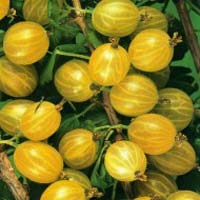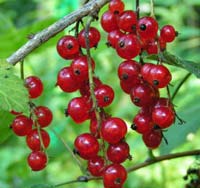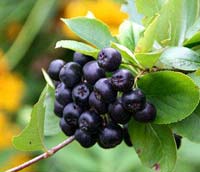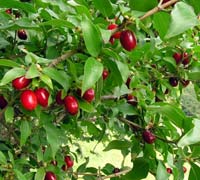ARONIA SEEDLINGS AND OTHER FRUIT SEEDLINGS
Aronia seedlings are a good investment in the future, especially when it comes to health, because aronia is the healthiest plant in the world
Aronia is a powerful, completely natural weapon in the prevention of disease, but also in situations when the disease is already present... The strongest of all species is the so-called Siberian aronia, which is grown in the embrace of a cold climate and untouched nature.
Aronia is also called the food of the future because it has a very high healing power for the human body. It effectively purifies it from harmful things and heavy metals and is therefore a useful prevention against malignant diseases. Studies have shown that it also has anticancer treatment, because it kills malignant cells of brain, lung, breast, colon, and liver tumor in a large percentage. As a remarkable antioxidant, aronia prevents the formation of free radicals and "attacks" on healthy cells in the body and blood plasma, thus slowing the aging process of the body and preventing the development of chronic diseases.
The antioxidant capacity of aronia and its juice is many times higher than that of blueberries and other berries known as antioxidant nurseries. The huge amount of tannins and flavonoids where anthocyanin plays the major role, make aronia the strongest known antioxidant of today. One hundred grams of ripe aronia fruit contains 16,100 ORAC units, while a daily dose needed for the tissue protection ranges from 3,000 to 5,000 ORAC units.
Numerous studies have found that this plant of dark berries improves blood circulation in the blood vessels, and with daily use, cholesterol and triglyceride levels are lowered, thus protecting the cardiovascular system. Aronia relieves migraines and headaches, effectively lowers blood pressure, and has beneficial effects on the intestinal mucosa and stomach. In addition, aronia is also known to raise the body's overall immunity, reduce inflammation, prevent the development of viral and bacterial infections of the urinary tract, and allow for better bile and liver function. Ripe fruit and juice contain large amounts of beta-carotene and zeaxanthin, which protect the cells from damage, the eyes from the onset of cataract, and the skin from dangerous sun rays and melanoma. It regulates the work of the pancreas and blood sugar levels, and thus can be useful in the treatment of diabetes and metabolic syndrome and is certainly recommended for diabetics. It is also used in improper thyroid function, helps heal wounds, slows skin aging by preventing occurrence of wrinkles and stretch marks, and helps with inflammation and varicose veins. Aronia also creates strong protection against the onset of dementia and Alzheimer's...
In addition, it is a true treasurey of biologically active compounds. There are over 300 of them. When it comes to vitamins, it contains all the essential nutrients - C, A, E, B1, B2, B3, B5, B6, B9, and when it comes to minerals, it is rich in zinc, iron, potassium, calcium, manganese, phosphorus and iodine.
Consumption
Many products, such as juice and tea, made from aronia grown in our area, have recently appeared in our market, but to be effective, berries can be consumed fresh - and it is enough to eat about 200 to 300 grams a day. To consume it year-round, aronia can be frozen, dried, cooked in as marmalade, juice, syrup, stewed drink, wine, liqueur, brandy. However, it is especially recommended as cold squeezed juice. It is enough to drink it once a day on an empty stomach, in one brandy glass...
It resembles a blueberry, but...
Aronia actually consists of tiny, small, dark blue berries in bunches that look very much like blueberries. They grow in the form of a bush up to two meters in height. The edible and medicinal part of the plant are berries with a strong taste that can last for up to two months after ripening on the bush. There are three types of aronia seedlings - black aronia (Aronia melanocarpa), burgundy (Aronia arbutifolia), and purple (Aronia prunifolia) and they belong to the Rosacea family of roses. There are no natural enemies or parasites, so this plant is not sprayed at all and rightly bears the name of organically grown berries...
It best grows in...
After the discovery of its healing power in the late 1970s, intensive planting of aronia seedlings began, and today they are planted throughout Europe. Aronia seedlings originate from eastern part of North America, i.e. today’s Canada, and have long been known by the Native Americans as a valuable nutritional and medicinal plant. They dried and ground the aronia berries, combining them with meat and flour. They used fresh fruit most often for gastric problems and diarrhea, flu and colds, and made tea for healing wounds from aronia leaves. It grows best in cold climates where winters last 5-6 months and summers are mild, with temperatures not exceeding 20 degrees...
What is Siberian Aronia and what is the difference?
Due to its very good tolerance of winter and frost and temperatures to minus 47 C, it has reached Russia and Siberia. Extremely low temperatures leave no consequences on it. Siberian aronia, or lat. Aronia melanocarpa, has a very high percentage of polyphenols, vitamins C, E and beta-carotene, making it one of the strongest known and tested antioxidants.
Of all, Aronia melanocarpa is of the highest quality. It is also known as a wild variety and usually has only 10 to 15 berries per cluster, but they are therefore three times stronger, that is, healthier than cultivated, grafted varieties. Mineral-rich Russia soil provides a naturally wide range of minerals, without additional fertilizers.
Russian biologist Ivan Vladimirovich Michurin researched and proved the power of aronia in the late 19th century. Contemporary scientists became interested in it only in the 1990s, followed by a series of new studies conducted in Norway, Sweden, Finland, Germany, Poland, Canada, USA and Russia. It is also interesting to note that aronia was also used after the Chernobyl accident to reduce the troubles of patients exposed to radiation...
Safe for use...
Siberian Aronia juice is safe to use from the first year of life and in pregnant women, without feeling sick. It is gluten free and is safe with all gluten free diets.
Fruit seedlings – SEEDLINGS OF CORNELIAN CHERRY:
Description:
The seedlings of Cornelian cherry produce a dark red fruit with a sweet and sour taste. The fruit can be used fresh and can also be used to make juices, jelly, etc. It grows over 5 meters in height and forms a dense crown. It blooms from February to April, ripening in late August. The fruit is medicinal and used to treat anemia and problems with kidney and digestive organs. It is resistant to all kinds of diseases.
Ripening time: End of August
Rootstock:
Fruit seedlings - SEEDLINGS OF GOOSEBERRY:
 Description:
Description:
Gooseberry is a shrubby plant that grows from 1 to 3 feet tall. Seeks medium-heavy soil. Gooseberry is a species resistant to cold. It blooms early and is better to plant it in the fall. The branches are thorny and thicker than in most berries. Gooseberry can be white, yellow, red and green. One gooseberry contains 500 mg more vitamin C than orange, which is known as a fruit rich in vitamin C
Fruit seedlings - SEEDLINGS OF CURRANT:
 Description:
Description:
Currant is a shrubby plant, and it ripens in July. Currant is rich in Vitamin C, helps in the treatment of various infections, kidney diseases, helps the bowel function and stimulates the excretion of harmful substances from the blood. Currant is a very widespread fruit, thrives in places exposed to the sun and good ventilation. It is used for preparations such as stewed drinks, marmalade and preserves.
Ripening time: VII
Fruit seedlings - SEEDLINGS OF ARONIA:
 Description:
Description:
ARONIA seedlings originate from the eastern part of North America. Due to its high resistance to frost, it can withstand winter to minus 47 °C and that is why it is called SIBERIAN BLUEBERRY. This is how aronia settled in Russia, Finland and Sweden. As an ornamental shrub or a fruit, aronia is an easy-to-use plant, suitable for planting both inside small gardens and on less fertile soil.

